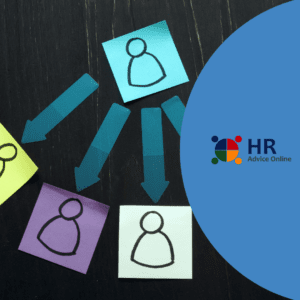Working for Women Strategy
The Australian Government recently issued the “Working for Women Strategy.” This strategy contains long term goals towards “an Australia where people are safe, treated with respect, have choices and have access to resources and equal outcomes no matter their gender” (Working for Women Strategy).
- End violence against women.
- Balance unpaid work.
- Close the gender pay gap.
- Close the retirement income gender gap.
- Gender equity in healthcare access and outcomes.
- Close leadership and representation gender gaps.

As an employer, the key areas to focus on are shown below:
Employers can create safe workplaces, including providing clear and effective responses to sexism, discrimination, harassment, bullying and abuse at all levels.
Employees should be trained in positive bystander behaviours to identify inappropriate behaviour and respond appropriately. All employees should feel safe in reporting and know who to go to and how to report.
As an employer you should review your company policies in consideration and support of employees who are experiencing or recovering from domestic violence and ensure they know how to access their entitlements to leave and what the entitlement is (10 days paid family and domestic violence leave per annum).
Employers are encouraged to “go beyond” their minimum obligations and transform workplaces, into flexible workplaces where parents and carers are, and feel supported.
Employers can ensure that working flexibly is not a barrier to promotion or leadership opportunities.
Many employers already use paid parental leave and flexible or hybrid working options to attract and retain employees.
All employers can support workplace gender equality, including closing of the gender pay gap and reducing gender bias and discrimination in the workplace.
Businesses can develop, implement, and adopt policies, practices and structures that aim to assist women to achieve economic equality and addressing discrimination that intersects with sexism, such as racism, homophobia, and ableism.
By conducting payroll audits and committing to address findings, employers actively work towards reducing the gender pay gap. Employers should address any discriminatory approaches to hiring, promotion and access to professional development.
Workplaces should implement strong policies to appropriately respond to complaints about sexism and harassment in the workplace, including providing access to expert support. Creating positive and respectful workplaces, by training staff to understand and respond to lower-level sexism and harassment (including sexist jokes and ignoring women in meetings) can further support a safe workplace culture and improve workplace engagement.
Employers play a vital role in reducing the stigma around mental health, by providing awareness, education, and support in the workplace. Employers can also reduce barriers to ensure employees receive the help they need when they need it (such as providing flexible time to access counselling services or supports).
Employers can also support women to manage their health needs in the workplace when it comes to chronic conditions, reproductive health, menstruation or menopause and endometriosis (for example).
The Commitment
The Australian Government has made a commitment to help families balance caring responsibilities and work commitments, provide gender equality and secure environment to support workforce participation.
In doing so, several actions and reforms are already underway or anticipated including:
- Making the paid parental leave scheme longer, more flexible, equitable and accessible.
- Additional rights to access unpaid parental leave and flexible work.
- Including breastfeeding as a protected attribute.
- Increase in wages for aged care workforce.
- Responding to Australian Competition and Consumer Commission inquiries into early childhood education and care.
- Introduction of 10 days paid family and domestic violence leave per annum
- Placed positive duty on employers to prevent sexual harassment and discrimination.
- Implement recommendation from the Respect@work report.
- Provide tax relief that supports work participation.
- Included gender equality as a national priority in the National Skills Agreement.
- Examination of gender and care interaction with superannuation and retirement income gaps, also reviewing the social security systems associated.
- Building the capability of employment services to support participation in the workforce.
- Strategies to improve health services and outcome for women and LGBTIQA+ people.
- Providing enhanced training to healthcare employees.
- Delivery of priority reforms under “closing the gap” including gender equality across all levels of government.
- Provide funding to support leadership program for women to run for parliament (increasing representation in political roles)
Need assistance understanding the Working for Women Strategy?
HR Advice Online provides a simple outsourced solution that will support you throughout the complete employee lifecycle; from recruitment to managing performance, navigating specific issues, and ending employment.
With easy access to professional help, you can gain the peace of mind that comes with knowing your business is compliant. Not having the right advice at the right time can cost you time and money. Our membership packages include:
- Support from our HR Advisory team for advice on issues specific to your business.
- Access to a wide range of resources and templates to assist you through every stage of the employee lifecycle
- Educational webinars & videos
- Regular updates when legislation changes




